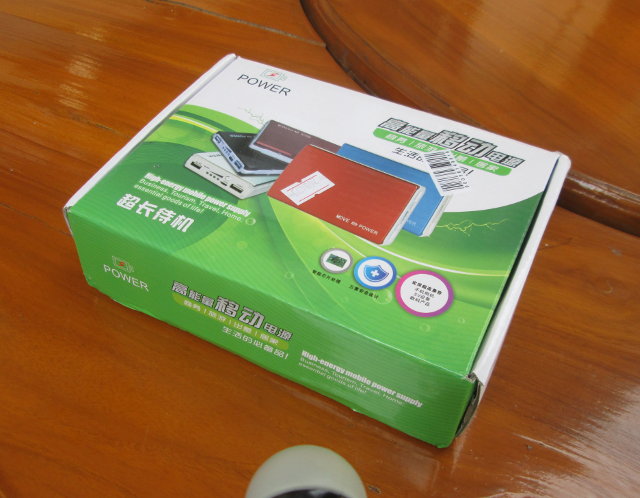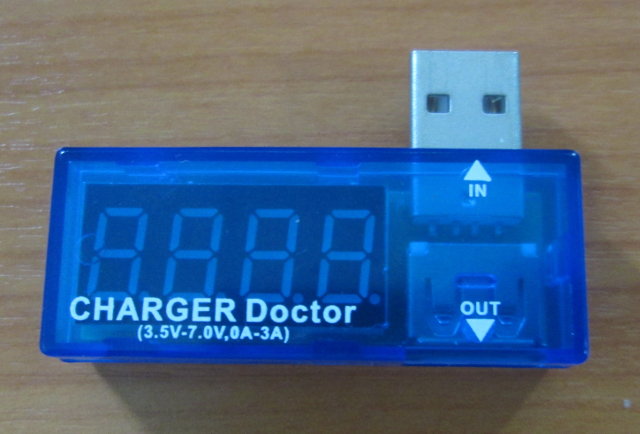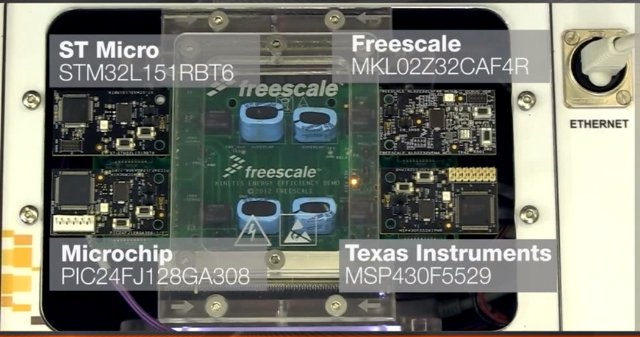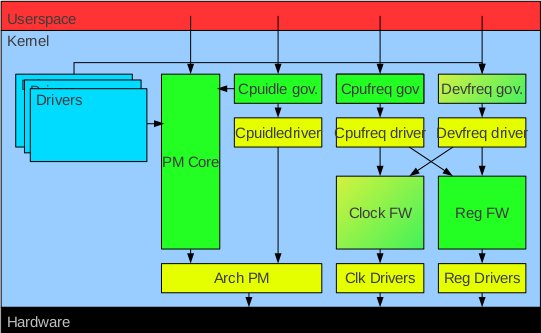A few months ago, I won a $5 coupon for DealExtreme, and decided to buy a “Portable 5V (30,000mAh) Li-ion Battery Solar Power Bank w/ Dual USB + LED – Black + White” for just over $20. For the price, solar charging was a nice bonus, and the 30,000 mAh was probably a “mistake” but it did not really matter. The SKU is gone, but 1BA-2 Solar power bank ($23.97) appears to be a very similar product. I did not plan to write about this gadget, but a few things happened that made me change my mind. First. it took over two months to reach me, instead of the usual 2 to 4 weeks. I ordered on the 9th of November 2013, and received the package on the 25th of January 2014. The reason being that the package got declined by Thai immigration (I live in Thailand). DealExtreme could not […]
Linux Kernel 3.13 Release
Linus Torvalds announced the release of Linux Kernel 3.13 yesterday: The release got delayed by a week due to travels, but I suspect that’s just as well. We had a few fixes come in, and while it wasn’t a lot, I think we’re better off for it. At least I hope so – I’ll be very disappointed if any of them cause more problems than they fix.. Anyway, the patch from rc8 is fairly small, with mainly some small arch updates (arm, mips, powerpc, s390, sparc, x86 all had some minor changes, some of them due to a networking fix for the bpf jit). And drivers (mainly gpu and networking). And some generic networking fixes. The appended shortlog gives more details. Anyway, with this, the merge window for 3.14 is obviously open. Kernel 3.12 brought new features to BTRFS and XFS file systems, PC’s GPU drivers improvements, better memory handling, […]
$5.40 CHARGER Doctor Makes USB Power Measurements Easy
One way to make power measurement for USB powered devices is to make your own USB cable to allow for current measurement via a multimeter, but if you think it’s just too much hassle, I’ve found and purchased a small test device called CHARGER Doctor that shows voltage and current on a 4 digit display, and sells for $5.40 on DealExtreme. The device features a USB female out port, and a USB male input port, that you can place between your USB power adapter, and the cable to your device to alternatively display voltage (4 seconds) and current (9 seconds). It can be used for power consumption measurements, to test if your charger is working normally, or finding out the power adapter that will charge your phone the fastest. It’s said to support measurement between 3.5 to 7V and 0 to 3 A, with an accuracy of +/- 1%. I’ve […]
MCU Energy Efficiency Benchmark – Freescale KL02, Microchip PIC24, TI MSP430, and STMicro STM32L
Freescale has recently uploaded a video comparison the energy efficiency of several micro-controllers: Freescale Kinetis KL02, Texas Instruments MSP430, STMicro STM32L, and Microchip PIC24. Since it’s a Freescale video, we already know the winner, but the test they performed it still interesting, and it shows drastic performance differences between architectures. The used the following exact MCU for testing: Freescale MKL02Z32CAF4R – Cortex M0+ @ 48 MHz STMicro STM32L151RBT6 – Cortex M3 @ 32 MHz Microchip PIC24FJ128GA308 – 16-bit MCU @ 32 MHz Texas Instruments MSP430F5529 – 16-bit MCU @ 25 MHz Freescale did not really select tough competition such as NXP LPC800 Cortex M0+, but instead a Cortex M3 MCU, and older 16-bit MCUs. I don’t know if Microchip has a new generation of ultra low power 16-bit MCUs , but Texas Instruments, for example, launched MSP430 Wolverine MCUs at the end of last year. So this comparison may not be […]
LinuxCon North America 2013 Schedule
LinuxCon (North America) 2013 will take place on September 16 – 18, 2013 in New Orleans, LA. The event will be co-located with several other conferences: the Linux Plumbers Conference, the Xen Project User Summit, the OpenDaylight Mini-Summit, the Gluster Workshop 2013, the UEFI Plugfest, the Linux Wireless Summit, the Linux Security Summit, and CloudOpen 2013. LinuxCon consists of 3 days of keynotes, and legal, operations, and developers related sessions as well as tutorials and workshops. There will be around 150 sessions and keynotes during those 3 days. I’ve gone through developer sessions and selected one for each time period. Monday, September 16 10:35 – 11:25 – UEFI and Linux by Kirk Bresniker, HP UEFI has become ubiquitous on the PC client systems and is coming up on servers and ARM-based systems, it is becoming the converged firmware infrastructure. UEFI Secure Boot feature has attracted a lot of attention from […]
Linux 3.9 Release
Linus Torvalds has announced the release of Linux Kernel 3.9: So the last week was much quieter than the preceding ones, which makes me suspect that one reason -rc7 was bigger than I liked was that people were gaming the system and had timed some of their pull requests for just before the release, explaining why -rc7 was big enough that I didn’t actually want to do a final release last week. Please don’t do that. Anyway. Whatever the reason, this week has been very quiet, which makes me much more comfortable doing the final 3.9 release, so I guess the last -rc8 ended up working. Because not only aren’t there very many commits here, even the ones that made it really are tiny and not pretty obscure and not very interesting. Also, this obviously means that the merge window is open. I won’t be merging anything today, but if […]
ARM big.LITTLE Processing Demo (HMP) on ARM TC2 Test Chip
Samsung launched Exynos 5 Octa at CES 2013. This processor comes with 8 cores: 4 Cortex A15 cores and 4 Cortex A7 cores, and it’s the first processor that’s been announced to work in big.LITTLE configuration, where the big cores (A15) handle demanding tasks, and the LITTLE cores (A7) handle simpler tasks such as audio playback or background tasks. This is all done to optimize power consumption. There are 2 big.LITTLE software implementations: In-kernel switcher (IKS) and heterogeneous multi-processing (HMP). The first one is easier to implements but can only use 4 cores (in Exynos 5 Octa) at a time, and the second is more complex, but can handle all 8 cores, and assign individual tasks to a particular core. For more technical details about big.LITTLE implementations, you can read my previous post. ARM and Samsung recently uploaded a video providing an overview of big.LITTLE (but instead of IKS and […]
Debugging Embedded Linux (Kernel) Power Management – ELCE 2012
Tero Kristo, Linux kernel developer at Texas Instruments, explains how to debug power management in Embedded Linux at ELCE 2012. Abstract: The presentation will talk about debugging various problems a kernel developer can face when working with power management. These include hardware related issues (IC / HW layout bugs, bad documentation) and software related (kernel bugs, driver problems, adding new kernel features, bad userspace behavior.) Along with presenting some of these problems, I will discuss about ways to debug these… power management typically requires specific tools to be used. I will base the discussion on my first hand experience from working with Linux PM. Target audience is (kernel) software developers interested in power management. The presentation is divided into 3 sections: Debugging tools / methods for PM Disabling kernel features Stress testing Tracing (printk / low level UART) GPIO / LED trace Debugger Buffered traces / statistics with trace-cmd & […]








